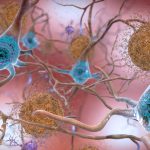by: Sasha Narain
Since May 2015, it is estimated that up to 1.3 million people in Brazil alone have been infected with Zika virus (ZIKV). Zika was initially isolated in Uganda in the 1940s in mosquitoes and monkeys. Beginning in 2015, this little-known disease quickly spread throughout tropical climate regions, ranging from South and Central America to the first locally acquired cases in Florida in July 2016 (CDC.gov). This mosquito borne virus presents with symptoms including rash, fever, and joint pain, but has also been linked to onset of Guillain-Barré syndrome, an autoimmune disease that targets the peripheral nervous system. Infection during pregnancy is linked to microcephaly, the shrinkage of the head and brain damage in babies. However, the exact mechanism of transmission from mother to child remains unknown. Based on this observed relationship between infection of the mother and birth defects of the child, researchers from the University of California, San Francisco Department of Cell and Tissue Biology, and University of California, Berkeley School of Public Health, have analyzed the routes of vertical transmission of Zika virus. The researchers studied the infection of human primary cells by different strains of Zika, and their findings suggest that there are two main routes of vertical transmission of ZIKV (from mother to child). Understanding this pathway, or pathways, is critical to assessing the threat that Zika virus poses for babies born to a mother infected with the virus. It is a stepping stone to further research necessary to prevent these birth defects.
In the past few months, the impact of the recent Zika outbreak on South and Central American countries has made headlines around the world. By disrupting our current understanding of mosquito-borne diseases and nearly halting the Rio Olympics, Zika has become a hot topic amongst scientists and media alike. However, 80% of those infected show no symptoms of the disease. For those who are symptomatic, the symptoms are rarely life threatening or even noticeable. Unlike other mosquito-borne flaviviruses, like dengue or chikungunya, ZIKV can be transmitted sexually and vertically in addition to transmission via mosquito bites and blood transfusions. This highly suspected link between infection of ZIKV during pregnancy and corresponding babies born with birth defects, like microcephaly, poses a unique threat to several generations. The impact of Zika may not be immediate; rather it could be felt over the next few years as children suffering from Zika-caused birth defects begin to require extensive resources from the government, from increased special need programs in schools to greater coverage of medical services.
Similarly, Zika has raised several public health concerns, especially in lower income areas and areas directly affected by poverty. Joshua Kruscal of International Policy Digest describes Zika as a “disease of poverty,” because the Aedes mosquito that transmits the disease most often breeds in places with “poor sanitation, and a high population density.” He gives the example of Brazil’s favelas, lower income communities in urban areas, noting that these communities most affected by Zika are often least prepared to combat it. As citizens lack access to medical resources, the government also lacks funding to provide further resources, creating a cycle that exacerbates the danger to citizens’ health and the public health costs on the government. While pressure is being put on the Brazilian government to invest in vaccination development as a preventative measure against future outbreaks and to slow the current outbreak, other innovative solutions targeting the spread of Aedes species mosquitoes have been successful. Experiments involving the proliferation of sterile mosquitoes to decrease the size of the next generation of mosquitoes show promise in eradicating the insect. However, these broad strokes taken against the mosquito tell us little about the pathology of the disease it carries.
Researchers from UCSF and Berkeley have infected human cells with strains of Zika in order to understand how the Zika virus reaches the fetus. They studied amniotic epithelial cells (AmEpCs) from mid- and late-gestational amniotic membranes, trophoblast progenitor cells (TBPCs) from chorion, and chorionic villus explants from first trimester placentas, all isolated from donors and then infected with the prototype ZIKV strain MR766. Seventy-two hours post-infection, the cells were stained to show proteins signaling flavivirus replication. They found that the AmEpCs were “highly susceptible to infection” because when stained, the cells secreted significant amounts of the signaling protein. Conversely, they found infection of TBPC’s and the chorionic villus explants was limited to single cells, implying that these cells are not key to transmission of the disease. Because AmEpCs were shown to be susceptible to infection through this initial experiment, this cell culture was again infected with a different strain of Zika isolated in Nicaragua. As in the first experiment, the AmEpCs were also susceptible to infection via the prototype strain of the virus. However, AmEpCs from mid-gestational placentas produced higher amounts of antibodies to infection than those from late-gestation placentas. This suggests that if infection occurs earlier in pregnancy, the fetus is exposed to more of the virus on a longer timeframe. Researchers speculate that a high viral load could increase risk of fetal malformations.
Researchers also isolated fetal membrane tissue from first trimester placentas and infected it with different strains of zika.The chorion is a membrane between the uterus and the fetus that increases blood flow between the mother and the developing baby. Chorionic villi increase surface area of the chorion, allowing further exposure of maternal blood to the fetus. The chorionic villus explants were also stained to show replication of the virus and staining confirmed that the virus is able to proliferate from cell to cell. This experiment allowed researchers to analyze the role that this membrane plays in dissemination of the virus. Because amniotic epithelial cells and these chorionic villus explants were susceptible to infection, their results indicate that there are two ways that the virus can reach the developing fetus.
Dr. Lenore Pereira, Professor of Cell and Tissue Biology at UCSF, summarizes her findings: “By studying human placental tissue, we have discovered that the virus replicates in placental cells and also can infect placental organ cultures.” Dr. Pereira then clarifies the significance of finding two routes of transmission, stating that “[the] virus is released from the tissue, meaning that it can spread readily in the uterus or to the baby.” As such, the more routes of transmission means the more likely the fetus will be infected.
By examining the cells that foster Zika, researchers can then use more precision when crafting drugs to fight transmission of the virus from the mother to the growing fetus. However, Pereira admits, “It’s an environment that the virus is particularly adapted to grow in,” indicating that there is more research that needs to be done before the scientific community has a full understanding of the virus. Despite our current understanding of flaviviruses, Zika remains elusive due to its unique symptoms and patterns of transmission. In order to be successful in the search for a cure or treatment for the disease, Dr. Pereira implores the scientific community to “continue to look at patterns of infection, figure out processes that this virus uses and [if it is] susceptible to a particular drug.”
Zika’s rapid spread across the globe and devastating effects have greatly impacted the next generation who must manage the social costs of this disease. Understanding the path that the virus takes to reach a fetus is fundamentally important in studying the mechanics of Zika and other flaviviruses. This research has shined a light on the transmission of the disease, opening up pathways for future research on cures, treatments, and prevention.




